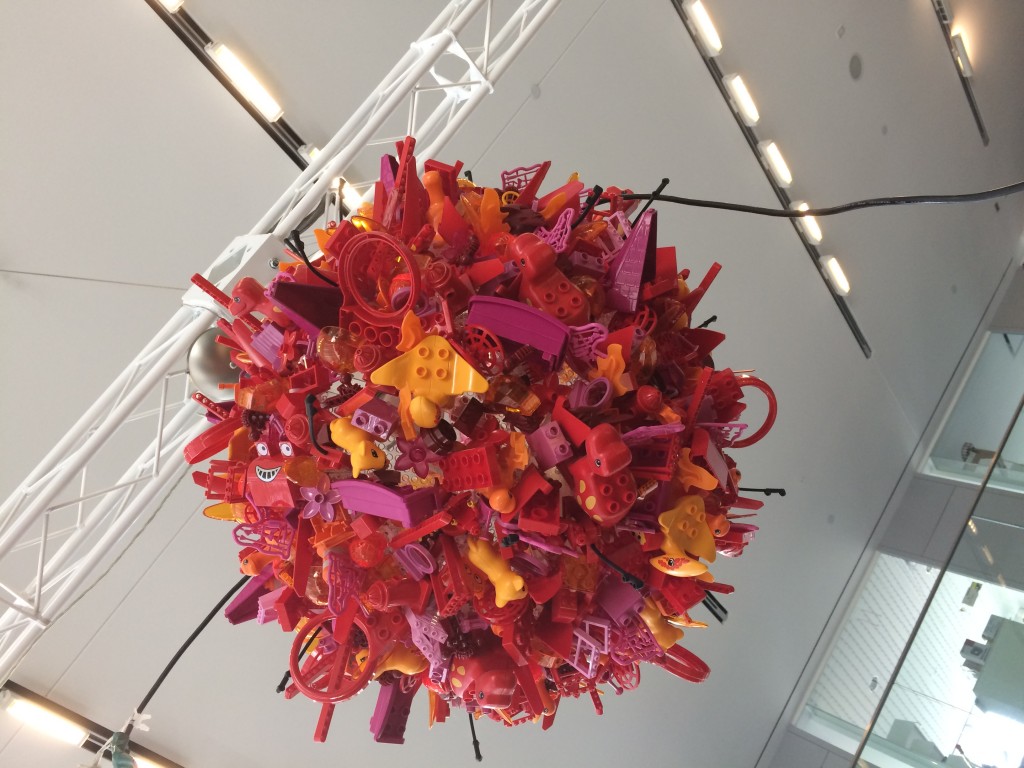A Citrix product engineer sat staring at a pile of popsicle sticks, pipe cleaners, fortune cookie boxes and rubber bands, and wondered what this could possibly have to do with innovation. He was joined by 600 of his colleagues at London’s Excel Center, as part of Connect 2012’s exuberant design thinking adventure. Their challenge was to redesign the before-work experience — the time between opening their eyes until the moment they arrived at the workplace.
The challenge began as everyone quickly found a partner to interview.
“How do you feel when your alarm goes off?”
“Tell me about the most frustrating thing that happened on your commute this week.”
“What’s for breakfast?”
Design thinking is a human-centered, prototype-driven approach to problem solving. The process begins with empathy. Listening closely to stories and needs is an essential part of developing empathy during the interview process.
Next came brainstorming. Each person thought about his or her partners’ needs as they tried to come up with innovative solutions. What is possible? What is impossible? What if I did this? No idea was shut down, and no judgment was allowed as participants were asked to generate 25-50 solutions to meet their partners’ needs in 5 minutes. Philip Casey, a product design manager, described the experience. “It was imagination run amok.”
Under each table, there was a box filled with materials: clay, paper clips, foil, scissors, key rings, construction paper, etc.
Participants were asked to use these materials to build a low-resolution prototype of one idea for their partners in eight minutes. An amazing array of designs emerged—robots that found cell phones stuck under a bed, apps that timed your shower, a closet with a video screen showing you all your options for dressing, and a bus service that picked up your kids in their pajamas and delivered them to school fully dressed, with their teeth brushed, hair combed, and an organized backpack filled with homework and signed permission slips. The creative energy lit up the room. And when the prototypes were shared, there was a great sense of being listened to. “I really liked how my partner listened to my frustration and designed something that would really help me have a better morning. I didn’t think anything worthwhile could be made in such a ridiculously short time frame, but he really got me.”
Design thinking focuses on asking the right questions, challenging assumptions, generating a range of possibilities, and learning through targeted stages of iterative prototyping. And in that hour, everyone at Connect got a taste of the process. What they would do with it remains to be seen. Catherine Courage, Vice President of Product Design and a design thinking visionary, described Citrix’s fiscal and strategic commitment to design thinking as a company-wide strategic imperative from Citrix’s CEO, Mark Templeton. She created Santa Clara’s new design collaboration space. “It is a big milestone on our design-thinking journey. It’s already played a key role in fostering a more collaborative culture that involves less over-the-wall processes, fewer silos, more and earlier collaboration, and better integration of design into the product development process.”
Corporate change-makers often search for visions of grand innovations with bold and immediate impact on the marketplace. Like fireworks, this may look wonderful, but real innovation is about what is sustainable, not ephemeral. It is not about the innovation, but about the innovator. At Connect 2012, in London, Fort Lauderdale, Santa Clara, Santa Barbara, and Bangalore, over 2500 Citrix product engineering team members learned design thinking. They learned about empathy as they shifted the focus from themselves to uncovering others’ needs. They generated an avalanche of ideas as creative energy filled the rooms. Risk taking, and failing forward were mindsets that framed their design challenge. And finally, they saw the value of a bias towards action as they learned a set of new tools.
Warren Berger, author of Glimmer: How Design Can Transform Your Business, Your Life, and Maybe Even the World, says, “By encouraging people to step back and reconsider old problems or entrenched practices, the designer can begin to reframe the challenge at hand — which can then steer thinking in new directions. For business in today’s volatile marketplace, the ability to question and rethink basic fundamentals — What business are we really in? What do today’s consumers actually need or expect from us? — has never been more important.”
When a corporate culture makes a shift, it has to begin with developing, nurturing and supporting innovators. Citrix did that in a six-week time frame, and gave 2500 people the tools to contribute to an agile, forward-thinking, sustainable culture — one innovator at a time.
And, sometimes all you need is a box that lets your imagination flourish, and you realize you really already possess the tools and the creative confidence to become an innovator.
“One can’t believe impossible things.”
“I daresay you haven’t had much practice,” said the Queen. “When I was your age I always did it for half-an-hour a day. Why, sometimes I believed six impossible things before breakfast.”
Lewis Carroll, Alice’s Adventures in Wonderland












